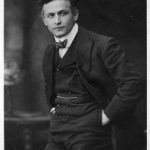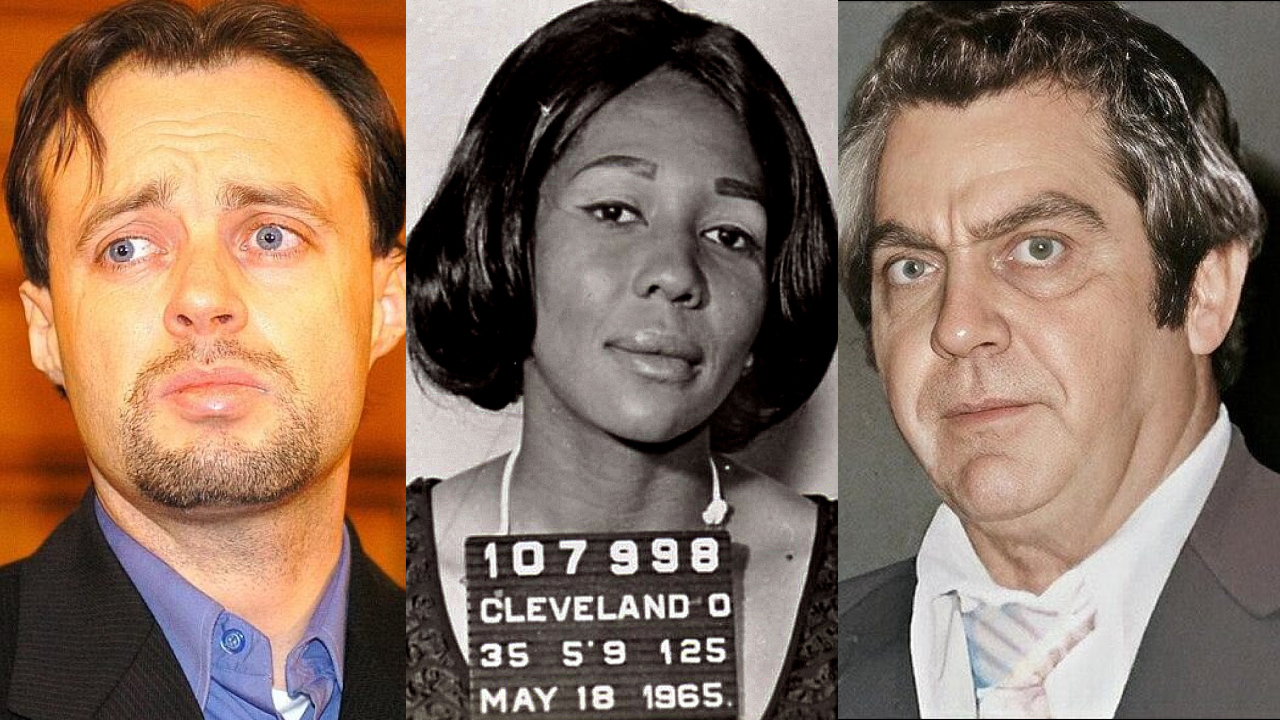Harry Houdini: The Master of Escape and Illusion
The name Harry Houdini conjures images, chains, locks, water tanks, and escape acts. From his roots as one of the most legendary magicians and escape artists of all time, Houdini sprawled past the stage, entering the realm of cultural icon. To say that his life was a whirlwind of innovation, bravery, charisma, and controversy would just be scratching the surface; there was even a chapter in his life where it was fueled by extreme ambition.
Table of Contents
Started with nothing, he carved out a tremendous career that inspires magicians, entertainers, and skeptics, even a hundred years later. Let’s just dive into his life with WorldsUltimate.
Biography & Early Life
Harry Houdini was born Erik Weisz on March 24, 1874, in Budapest, Hungary. He and his family emigrated to the United States when he was 4, settling in Appleton, Wisconsin. There, the family adopted the last name Weiss, and Erik changed to Ehrich, later shortened to “Ehrie” or “Harry.”
Herman Mayer Weiss belonged to Budapest, Hungary. He migrated to America along with his family. He was not well-off and had to put in a long struggle for family upkeep. His eldest son, Ehrich Weiss (Later Harry Houdini) had to join him at work at an early age of 9 years. The boy possessed natural talents for the performing arts. Soon, he joined a circus as a trapeze artist.
In 1887 Herman Mayer shifted to New York but work conditions did not change. However, the boy took to swimming, boxing and running in his free hours. His physic developed accordingly that was to help him in his later career. He also had original instincts for magic from childhood.
The Debut
Houdini made his debut performance in 1891 with his friend Hymen. They started from card games and magic tricks in museums and small theaters in New York. The World’s Columbian Exposition in Chicago 1893 gave them a good chance to get set. In 1894, Harry met a fellow performer, 18-year-old Wilhelmina Beatrice Rahner, or Bess. They got married and their act was renamed “The Houdini’s” from “Brothers Houdini”. Soon, Harry Houdini became fed up with his tough routine and planned to start ‘Harry Houdini’s School of Magic’ in New York, but dropped out.
The rabbi’s son grew up in poverty, which inspired his drive to become famous and well-off. He took an early interest in trapeze acts and magic. His debut, at 9 years old, was as a trapeze artist named “Ehrich, the Prince of the Air.”
By his late teens, Ehrich had taken on the stage name “Harry Houdini,” after the French magician Jean Eugène Robert-Houdin. A friend suggested adding an “i” to the name, which she was sure would make it sound even more French, and therefore, more magical. The evolution from Ehrich Weiss to Harry Houdini was the beginning of the legend.
Greatest Escape Artist Harry Houdini
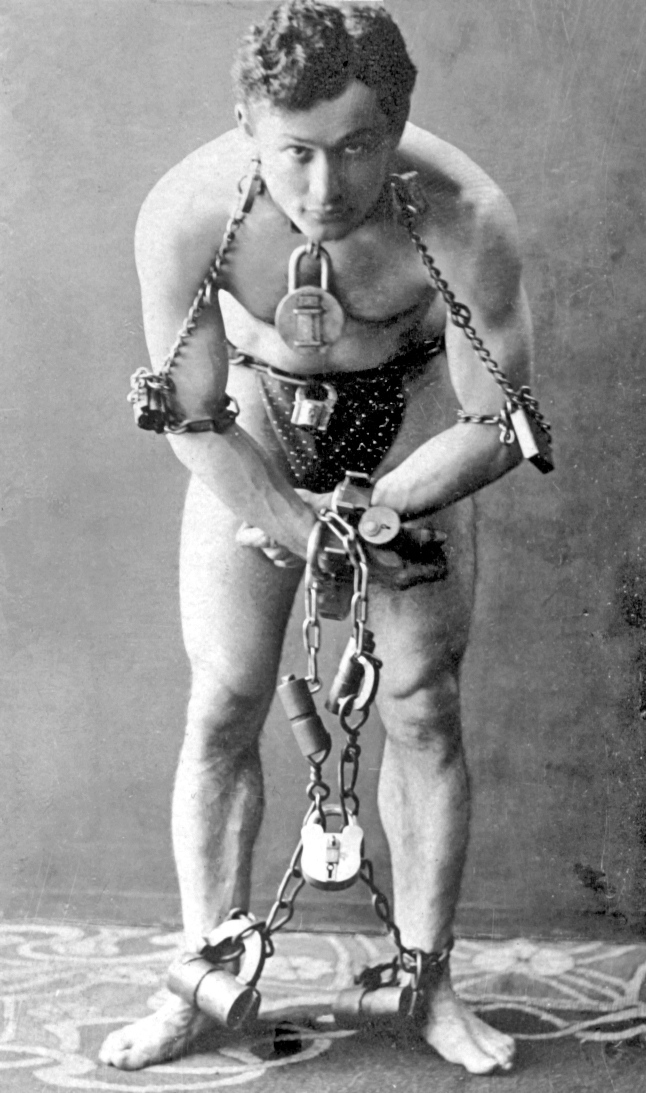
Harry Houdini finally met lucky opportunity in 1899. Martin Beck, a very strong figure in Vaudeville theater was deeply impressed by his handcuff tricks. He challenged Houdini to escape from Beck’s handcuffs, which he did easily. The extremely impressive performance has Houdini to open Omaha March in partnership for the next season. This changed Houdini’s life pattern. Houdini remained quite busy for the next five years.
His magical acts and escape performances were respectable and admirable throughout the leading Vaudeville houses and across California.
They also hit the Keith East Coast Circuit. To break the monotony he introduced new “jail” escape stunts, which were very successful. He was admired by the crowds where ever he went. The public called him the “King of Handcuffs”. This “Celebrated Police Baffler” (nicknamed) often performed escape stunts by jumping in rivers particularly Charles River, fully chained, and emerging on a surface in minutes with big crowds applauding decade passes.
The later years saw him in high society lavish theaters. His selective approach paid-off well. Soon his fame crossed the Atlantic Ocean and Europe’s advanced culture tempted him. This inclination disturbed his relations with Beck. So he planned to go on his own.
Harry Houdini was welcomed in Europe, and public acceptance of his escape acts took off easily. For five years, he combed the continent, delighting the crowds. The most remarkable part was taking public challenges. One such demand proved tough.
The Newspaper “Mirror” of London arranged a special set of handcuffs, known as “Mirror Cuffs”. Houdini took the longest time, over an hour with many disturbing expressions and failing gestures for the audience. As soon as he got free the music hall heard the tallest roar setting off a chain of appreciation slogans and praise comments.
Start of Fame
The next big bang of his fame occurred when Kaiser’s difficult police accused him of fraud. He had to satisfy the court by revealing some tricks, partially. However, his publicity soared thereafter claiming for him Germany’s title “Konig der Handschellen”. He simply conquered Europe alone, with Bess.
Houdini finally decided to settle down in 1905. He bought a small farm in Connecticut and a Brownstone home in Manhattan. After his father died in 1892, he became very dedicated to his mother. The Brownstone became his family base. Here, he also maintained an enormous, rare book collection. His profession required a lot of traveling. But he often took a break. And he returned home to attend to his mother. He was in Sweden and fainted when he heard of his mother’s death in 1913, and then he wept to full exhaustion.
Harry Houdini never retired. He remained active and kept on inventing new tricks to hold on to his audience. In 1908, the famous milk can escape reinforced its publicity. He also often performs in awesome jumps from laugh bridges in the presence of large crowds.
Magic Career & Notable Escapes
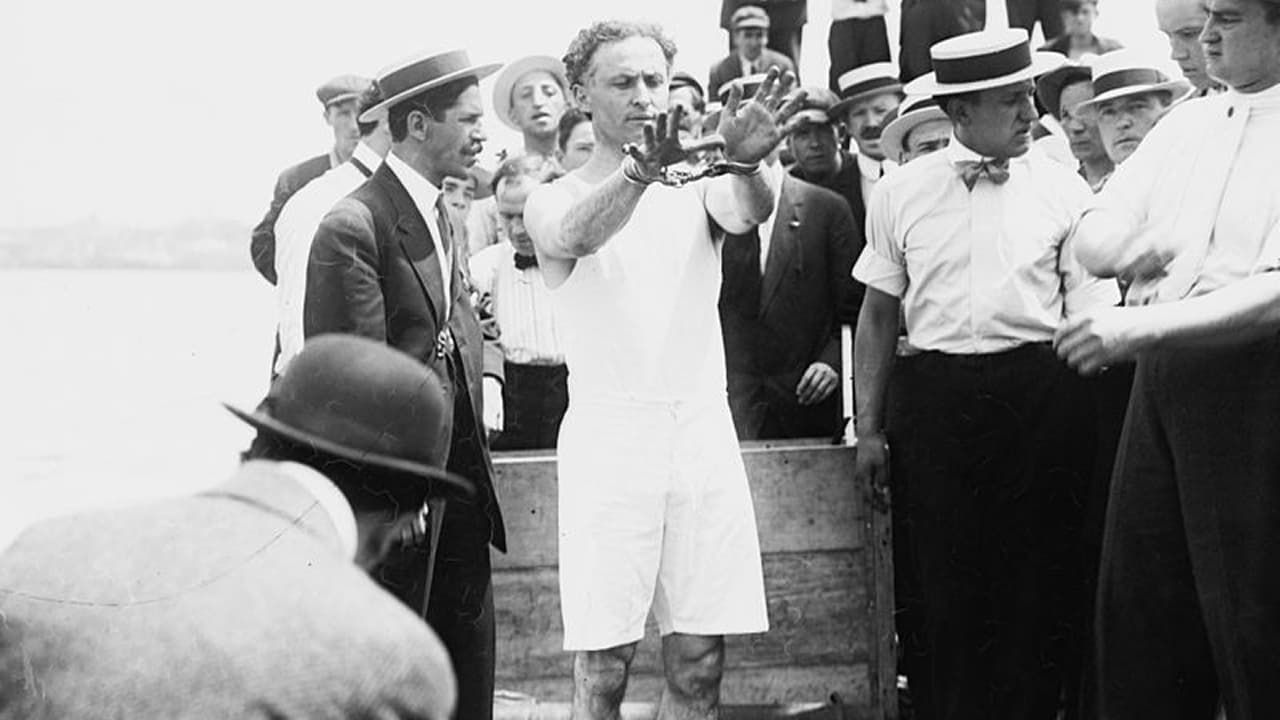
Houdini started in typical magic, but he didn’t get anywhere until he started doing escapes. He first achieved success in 1899 when a vaudeville impresario, Martin Beck, saw him perform his handcuff escapes and suggested he specialize in them. Houdini accepted the advice and earned the title of “The Handcuff King.”
His escape performances were defiant and theatrical, requiring ever more elaborate devices. Here are some of Houdini’s most famous escape performances:
| Escape Act | Description |
| Handcuff Escapes | Escaped from various handcuffs, often under police supervision |
| Milk Can Escape | Locked inside a water-filled milk can, escaping before drowning |
| Chinese Water Torture Cell | Hung upside-down in a water-filled glass tank, escaping unseen |
| Straightjacket Escape | Escaped from a tightly bound straitjacket, sometimes while suspended |
| Buried Alive | Escaped from a casket buried under six feet of earth or submerged in water |
Houdini’s performances enthralled audiences not only for the ability involved but also for the psychological suspense they engendered. He often dared police officers to handcuff him with the strongest pair of handcuffs they had or to put him in jail cells, escaping within minutes.
Famous Escapes
The “Chinese Water Torture Cell” escape was his latest and greatest trick. This exhibited his great physical strength combined with his brilliant technical abilities and dramatic touches. This risky performance was repeated many times. For some time, people suspected that he died in a failed cell escape attempt.
Some of his notable escapes include:
- Daily Mirror Challenge
- Milk Can Escape
- Chinese Water Torture Cell
- Suspended Straitjacket Escape
- Overboard Box Escape
- Buried Alive Stunt
In addition to escapes, Houdini was a master magician, producing tricks including the vanishing elephant and metamorphosis, in which he and an assistant would exchange positions in a locked trunk in seconds.
As his popularity grew, Houdini traveled across the United States and Europe, packing in huge crowds.
He would later gain fame not only for his acts but also for his skill at promoting them. His acts included the use of newspapers and posters to create anticipation and mystery around them, accompanied by public challenges that made headlines.
Personal Life and Beliefs
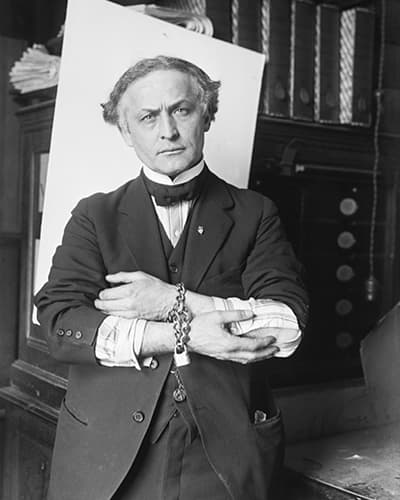
In private life, outside the public display, Houdini led a deeply personal and frequently secretive life. He married Wilhelmina Beatrice “Bess” Rahner in 1894; she became both his stage assistant and his lifelong companion. Though the couple never had children, they had a solid relationship, and Bess played an integral role in Houdini’s work life.
Houdini was known to present himself as a mystical figure, but he was a strong doubter. After his beloved mother died, he became consumed with exposing frauds among spiritualists and mediums, many of whom said they could communicate with the dead. Houdini unveiled fraudulent spiritualists through public demonstrations, gave voice to scientific skepticism in books, and used his platform to advocate for science.
He served on the Scientific American board that proposed awarding a cash prize to anyone who could demonstrate genuine supernatural ability. None succeeded while Houdini was on the panel. His crusade against spiritualism put him at odds with many of the great figures of his day, including Sir Arthur Conan Doyle, who was a fervent believer in the supernatural.
Houdini became an active Mason and a member of St. Cecile Lodge No. 568 in New York City. In 1904, Houdini bought a townhouse in New York City at 278 West 113th Street (between Frederick Douglass Boulevard and Bethune).
He paid US$25,000 (equivalent to $847,778 in 2023) for the five-story, 6,008-square-foot house, constructed in 1895 and lived there with his wife Bess and various other kin until he died in 1926.
In March 2018, it sold for $3.6 million. A plaque bolted to the facade by the Historical Landmark Preservation Center says,
“The magician lived here from 1904 to 1926 collecting illusions, theater memorabilia, and books on psychic phenomena and magic.”
Superman Entertainer’s Life had more aspects that the public needs to know.
The real name of Harry Houdini was Erik Weisz. His Ideal was a French magician, Jean Eugene Robert Houdin. He added Houdini (meaning like Houdin). Later, it was revealed that Robert, too, had taken ‘Houdin from his wife’s name. However, it proved lucky for Harry.
The USA Government recognized the superstar magician with a commemorative stamp (Scott # 3651) depicting Houdini. The stamp carries a hidden magical image showing him in chains, ready to escape. You can see the image only with a special lens.
He has starred in Silent Movies and also produced two. This venture did not pay well. Houdini flew the earliest airplanes and visited Australia in 1910 by a Voisin biplane. This was the first powered flight in Australia.
You Might Like to Read: Famous Thieves in History – Remarkable Heists & Hustles
Houdini was against spiritualists who claimed to contact the dead relatives of people for large amounts. He often commented. They were preying upon the emotions of the bereaved families. Since he knew their tricks, he exposed them rightly.
Houdini was a Jew and was buried at Machpelah Cemetery in Queens, New York. His wife died 17 years later and wished to be buried near him. But she was refused for being a Catholic. Some say her relatives thought she might be denied heaven if buried with a Jew. Hence, buried in a different County in New York State.
Death and Legacy
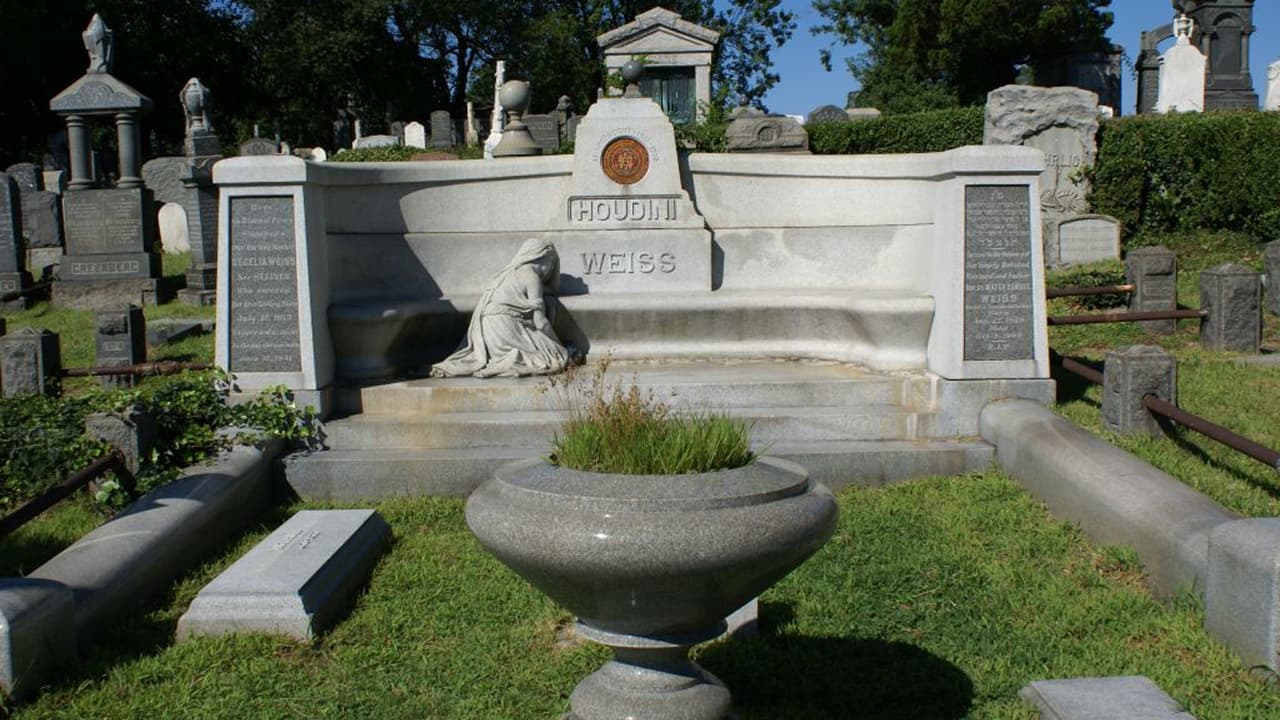
Houdini died on Halloween – fittingly, on Oct. 31, 1926, at 52. He died of peritonitis from a ruptured appendix. It was subsequently reported that he had been punched in the stomach by a student, testing claims that the principal had great physical resistance. Whether they were a direct result of the punch is debated to date.
His funeral drew thousands, and in Queens, New York, in the Machpelah Cemetery beside his family, he was buried. Even in death, Houdini remained enigmatic. He told his wife that he would try to contact her from the afterlife via a secret code. Every Halloween night for ten years, Bess had a séance, wishing for some sign from him. Although she never received the communication, the Houdini séance is still performed to this day, a testament to his enduring mystique.
Houdini continues to inspire thousands of other magicians and escape artists, who regard him as the founder of modern magic. He has had a profound influence on an entire generation of magicians – including David Copperfield, Penn & Teller, and Criss Angel. He elevated magic from amusement to theatrical spectacle.
Houdini in Film, Music, and Popular Culture
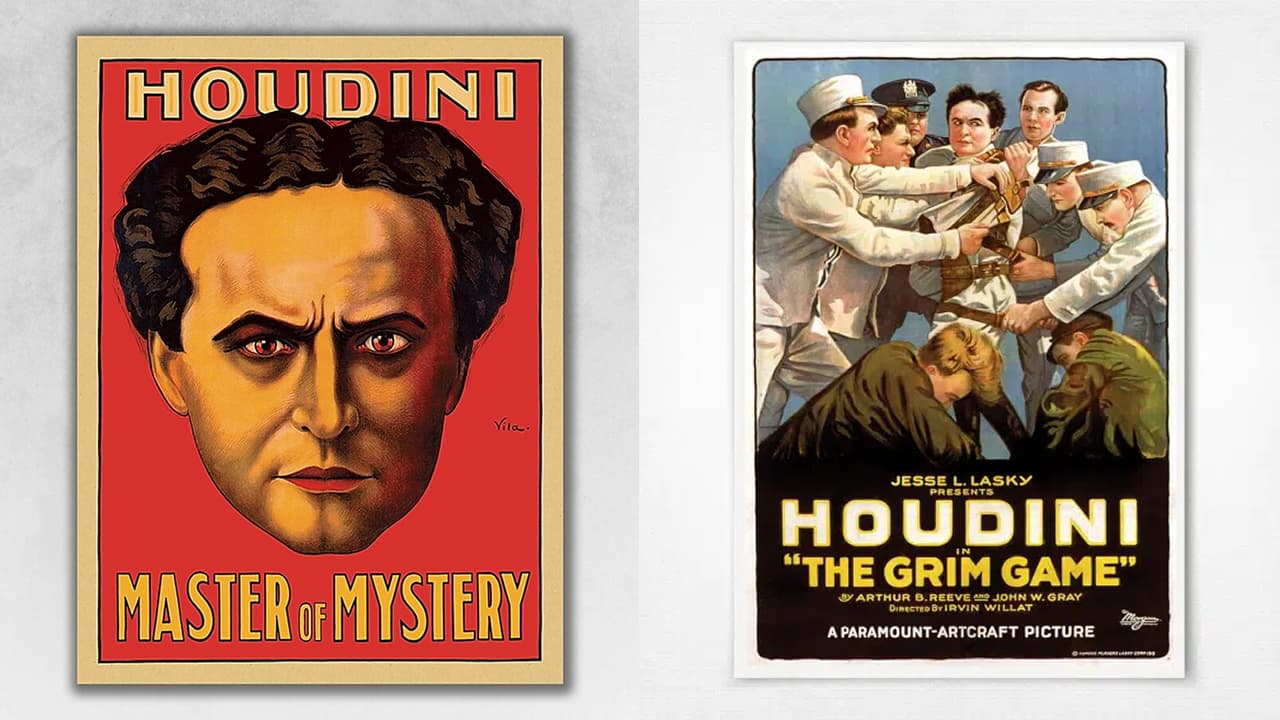
With his influence far beyond the stage, Houdini’s imprint, thankfully, also remains enduring. He was a visionary in front of the camera and as a filmmaker. He produced several silent features, including The Master Mystery (1918), The Grim Game (1919), and Terror Island (1920).
While his film work never matched his stage success, he left his mark as a personality and a stunt performer onscreen. He even started his own movie production company, though it was short-lived.
Here is a table highlighting Houdini’s film ventures and his cultural impact:
| Media & Cultural Reference | Contribution/Portrayal |
| Silent Films | Starred in and produced action-packed serials and mystery thrillers |
| Biographical Films | Portrayed by actors like Tony Curtis and Adrien Brody |
| Music References | Mentioned in songs by Elvis, Dua Lipa, Foster the People, and more |
| TV Shows & Documentaries | Featured in magic-themed series and historical documentaries |
| Video Games & Escape Rooms | Referenced as a benchmark for escape artistry |
In music, Houdini has been name-checked by everyone from Elvis Presley to more modern acts like Foster the People and Dua Lipa. His story has become associated with escape, freedom, or mystique. Even the reality shows and talent competitions that have a magic theme regularly and explicitly invoke him by name as the highest standard of magical ability.
The name, persona, and image of Houdini have become culturally significant for overcoming the impossible. His impact on pop culture is so powerful that nearly a century after his death, he remains a household name.
Museums, Books, and Contemporary Tributes
Houdini’s memory thrives at many institutions. The Houdini Museum in Scranton, Pennsylvania, and the House of Houdini in Budapest include artifacts, memorabilia, and exhibitions devoted to his life and work.
There are many books about Houdini — biographies and historical analyses, and fictionalized accounts of his exploits. His techniques, psychology, and cultural significance continue to be matters of academic interest. Houdini himself authored some books, like The Unmasking of Robert-Houdin and A Magician Among the Spirits, documenting his fight against spiritualism.
Here is a roundup of significant tributes and resources about Houdini:
| Tribute Type | Description |
| Museums | Houdini Museum (PA), House of Houdini (Budapest) |
| Biographies | The Secret Life of Houdini, Houdini!!! |
| Documentaries | The BBC, History Channel feature on Houdini’s life and legacy |
| Digital Tributes | Google Doodle (2018), Houdini-themed escape rooms |
| Magic Communities | Regular homage paid at conventions and in performances |
Conclusion
Harry Houdini was more than a magician — he was a sensation. His remarkable skill, relentless work habits, and flamboyance made him a worldwide celebrity. But he determined to go beyond limitations — physical, psychological, or even metaphysical — that made him legendary.
A hundred years later, he is an obsession. If you have a strong enough will, nothing is impossible. Whether history, entertainment, or cultural mythology, Houdini is the archetypal escape artist from chains, from death, from mortality into immortality.
